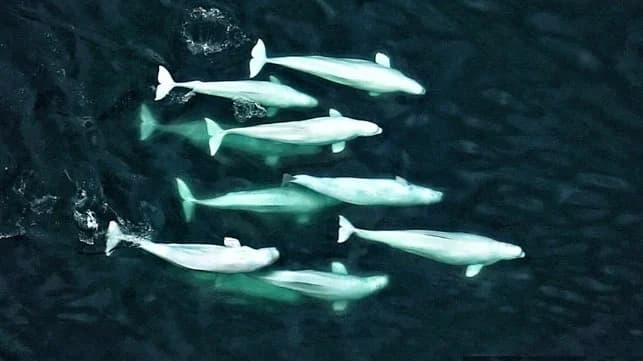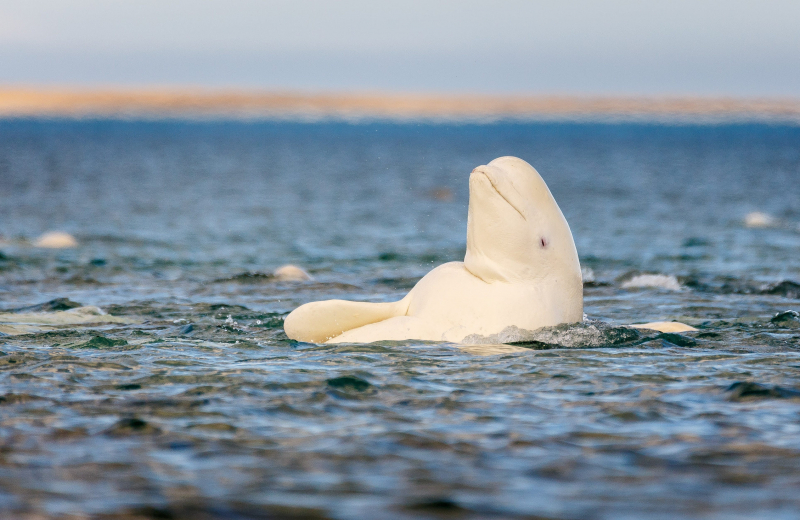Beluga Whale
One of the tiniest whale species is the beluga/white whale. They are easily recognized by their unusual color and pronounced foreheads. The beluga, in contrast to most other whales, has a neck that is incredibly flexible, allowing it to nod and tilt its head in any direction. Beluga whales typically coexist in tiny communities known as pods. They are vocal communicators and gregarious animals who use a wide variety of clicks, whistles, and clangs. Other sounds can also be imitated by belugas.
Although they can also be found in subarctic regions, these whales are frequently seen in the coastal seas of the Arctic Ocean. When the sea in the Arctic freezes over, beluga whales travel south in large herds. Fish, crabs, and worms are the main foods for belugas. The whale is linked to the narwhal, a tusked "unicorn" whale. The same-named sturgeon, which has been widely fished for its famed caviar, is not related to the beluga.
Native Arctic populations in Alaska, Canada, Greenland, and Russia engage in commercial and recreational beluga hunting. Due to their predictable migration patterns and the high population density in estuaries and the nearby coastal areas during the summer, belugas have historically been simple prey for hunters.












